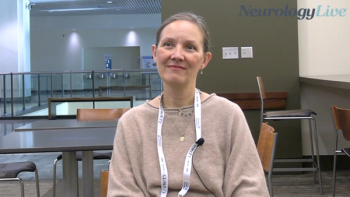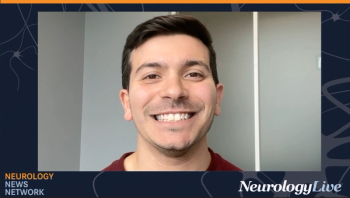
- February 2022
- Volume 5
- Issue 1
Parkinson Disease Subtyping: Are We There Yet?
Heterogeneity suggests that identifying different types of Parkinson disease could improve patient management, the understanding of underlying disease mechanisms, and the development of target-specific therapies.
CLINICIANS AND RESEARCHERS HAVE long considered
As we embarked on this challenging journey, initial research focused on clinical characteristics to identify and separate different PD cohorts to allow for better prognosis, information concerning risk of cognitive or mood disorders and rate of disease progression, and, potentially, ability to guide treatment. There is great interest in the use of such a personalized medicine approach in the field as it applies to advanced therapies, such as deep brain stimulation.
Age when symptoms begin commonly is used to subdivide patients into those who experience late- or early-onset PD.2 Cutoffs are inconsistent among studies, yet most evidence suggests that late-onset PD is linked to more severe tremor, axial symptoms, a lesser motor response to dopaminergic treatment, a greater risk of psychosis, and a substantial tendency for medication adverse effects. Response to advanced therapies has been questioned; reports suggest that patients who are older at time of deep brain stimulation have an increased risk of perioperative delirium and less benefit in quality of life.3 Conversely, early-onset patients present with a higher prevalence of dystonia, possible higher burden of nonmotor symptoms, and a lower risk of cognitive impairment or dementia. One of the greatest challenges in evaluating age-defined cohorts is a limited ability to assess superimposed or concurrent cerebrovascular disease, musculoskeletal concerns, or
Recently, data-driven approaches have been used to define PD subtypes.4 Data-driven subtyping takes an unbiased statistical approach to the identification of potential subgroups. Most studies rely on common clinical features that produce different combinations and numbers of subtypes. The differences between results are likely due to cohort characteristics and variables analyzed.
The use of clinical features to separate different motor phenotypes has been studied extensively. The most practical approach divides the patient population into those with tremor and those with predominant axial symptoms; the latter group is labeled the postural instability and gait dysfunction (PIGD), or akinetic-rigid type, phenotype. Patients with PIGD may become less responsive to therapy over time, leading to an increased risk of falls and injury and more rapid disease progression associated with loss of autonomy and institutionalization.5
Studies have used large clinical databases (eg, the Parkinson’s Progression Markers Initiative) to retrospectively identify unique motor subtypes. Five distinct motor subtypes have been proposed based on the motor assessment—tremor dominant (TD), axial dominant, appendicular dominant, rigidity dominant, and postural and instability gait disorder dominant.6 A recent study with short-term follow-up duration identified 3 subtyping categories: mild-motor predominant, intermediate, and diffuse malignant.7 Using a similar approach, our group used long-term data to validate this cluster-based subtyping in a larger PD sample and to extend follow-up to 20 years after diagnosis.8 We observed a similar shift away from TD characteristics and toward those of PIGD. Overall, we found that most patients exhibit changing subtypes with time and eventually fit TD and PIGD subtype classifications. Nonetheless, many questions remain unexplored or have unclear answers.
In general, there is a lack of validation in most data-driven PD subtyping systems, and subtypes are defined based on multifactorial group characteristics. Clinical phenotyping has not been used to identify biomarkers or develop disease-modifying drugs that can help prevent affected individuals from transitioning toward PIGD.
Looking to enrich the current approach, are nonmotor symptoms useful for subtyping?
Nonmotor symptoms (eg, cognitive impairment, autonomic dysfunction, mood disorders) may be the most commonly encountered and, at times, the dominating features in PD. Patients given a diagnosis of PD exhibit clear patterns and differences in these symptoms, which may be valuable in subdividing patient groups or expanding clinical phenotyping. New attempts to classify patients based on their predominant nonmotor symptom(s) are ongoing and may provide more information regarding the pathophysiologic mechanisms of PD.9 This approach is limited, as most patients experience several nonmotor concerns over time, and clinically based approaches possess their own limitations.
Because of these concerns, the suggestion of adding brain imaging to identify specific aberrant neurotransmitter networks and refine subtypes has been entertained. Using this strategy, several classifications have been constructed. The cholinergic or cognitive dysfunction–dominated presentations are best characterized in patients with early cognitive deficit with a tendency for early falls, imbalance, and progression to dementia. Positron emission tomography (PET) studies have suggested cholinergic cortical and systemic (eg, gastrointestinal tract) involvement in early disease.10
Experimental animal evidence suggests an important role of the serotoninergic system in PD. Selective 5-hydroxytryptamine receptor agonists dampen serotonin neuron-derived dopamine release in animals. Several serotoninergic drugs have been investigated in the disease, including some to manage levodopa-induced dyskinesia. Similarly, PET studies using the serotonin transporter ligand carbon C 11 3-amino-4-(2-dimethylaminomethyl-phenylsulfanyl)-benzonitrile support the presence of a specific PD subtype characterized by somnolence, fatigue, and sudden onset of sleep resembling narcolepsy with selective reduction of serotonergic uptake in the limbic striatum, the raphe area, and/or right insula.11
Finally, a proposed noradrenergic subtype is characterized by focal or generalized dysautonomia, with norepinephrine being the leading neurotransmitter involved. Gastrointestinal dysfunction (eg, delayed gastric emptying, constipation) is the principal manifestation. Additional clinical research is needed to better understand the progression and transition between different nonmotor subtypes. Conceivably, subtypes might converge significantly over time; clinical subtypes are considerably unstable and require modified therapeutic approaches as the disease progresses.
How about genetic subtyping? Where do we stand?
The discovery of monogenetic PD and genetic risk factors presents one of the most logical and intuitive opportunities for subtyping and developing target-specific disease-modifying therapies. There is considerable interest in this area—genetic testing is becoming increasingly affordable, and new initiatives (eg, PD GENEration) are underway.
The most studied mutations involve GBA and LRRK2. GBA mutations are the most common genetic risk factor for PD harbored by 7% to 10% of affected patients. These patients have an increased risk of cognitive impairment and experience rapid disease progression. LRRK2 mutations result in the most common monogenic form of PD; the clinical phenotype largely resembles sporadic PD except for earlier onset of symptoms, greater lower extremity involvement, lack of cognitive impairment, and lower prevalence of hyposmia and rapid eye movement sleep behavior disorder.
Unique genetic mutations might allow for exploration of unique, specific pathophysiologic mechanisms and biomarkers. With the development of targeted, or gene-specific, interventions, several ongoing clinical trials are testing molecules that would increase enzyme activity, direct enzyme replacement, replace genes using an adeno-associated virus vector-9, or reduce gene expression. The encouraging results of early studies have demonstrated adequate safety and target engagement. However, certain agents (ie, venglustat) failed to produce any slowing of disease progression. based definition for this complex disease to inform direct therapeutic implications.
Denali Therapeutics has developed 2 LRRK2 inhibitors— DNL201 and DNL151—that are in a clinical phase of development with data supporting continued study in patients given a diagnosis of PD. Genetic target–specific therapies may be developed to treat other monogenic forms of PD and sporadic PD in patients demonstrating shared and “modifiable” biomarkers. Some clinical trials targeting GBA or LRRK2 are recruiting patients with PD who do not harbor a genetic mutation.
How can we further classify patients to improve science and clinical care?
We are beginning a new phase of medicine where clinical expertise would rely on novel neuroimaging, genetic, molecular and biomarker techniques to better identify the biological underpinnings of different patient populations as they relate to specific diseases. As we enter this era, a single disease may turn into many, a clinical diagnosis may be considered a “syndrome,” and detailed assessment of biological signatures may be critical to pave the way for individualized medicine. Subtyping would require incorporation of different techniques, definition of new and evolving biomarkers, and, ideally, identification of pathophysiological signatures that strongly correlate with genetic and serum markers that, in turn, may inform our therapeutic approach. Our lack of disease-modifying therapies primarily is a result of our inability to test a homogenous population; motor and nonmotor clinical differences are obvious to health providers caring for patients given a diagnosis of PD. There are several challenges ahead, starting with need to discover biomarkers that would apply to entire populations of patients with this disease. Currently, genetic changes are found only in a small percentage of patients with PD, and this poses a challenge for recruiting participants for gene-targeted trials. The development of simple, noninvasive, inexpensive, reproducible, and reliable biomarkers will contribute to accurate subtyping.
Gut microbiomes, metabolomics, and proteomics are being used to supplement current approaches, and novel neuroimaging techniques are expanding. As the field of pharmacogenomics rapidly grows, differences in drug metabolism may assist in defining and enhancing PD subtyping. There is a need for more extensive use of longitudinal data to expand our understanding of the stability and prognostic value of proposed subtypes. This is particularly important for the incorporation of advanced imaging techniques and artificial Intelligence to evaluate and treat this disease. Similarly, data in patients with very early disease, including those with prodromal PD, may provide new insights into the progression and stability of PD symptoms. As science and our understanding of PD subtypes continue to evolve, our community should continue to develop a biologically based definition for this complex disease to inform direct therapeutic implications.
REFERENCES
1. Weiner WJ. There is no Parkinson disease. Archives of Neurology. 2008;65(6):705-708. doi:10.1001/archneur.65.6.705.
2. Goetz CG, Tanner CM, Stebbins GT, Buchman AS. Risk factors for progression in Parkinson’s disease. Neurology. 1988;38(12):1841-1844. doi:10.1212/wnl.38.12.1841.
3. Dafsari HS, Reker P, Stalinski L, et al. Quality of life outcome after subthalamic stimulation in Parkinson’s disease depends on age. Mov Disord. 2018;33(1):99–107. doi:10.1002/mds.27222.
4. Mestre TA, Eberly S, Tanner C, et al. Reproducibility of data-driven Parkinson’s disease subtypes for clinical research. Parkinsonism Relat Disord. 2018;56:102-106. doi:10.1016/j. parkreldis.2018.07.009.
5. Jankovic J, McDermott M, Carter J, et al. Variable expression of Parkinson’s disease: a base-line analysis of the DATATOP cohort. The Parkinson Study Group. Neurology. 1990;40(10):1529–34. doi:10.1212/wnl.40.10.1529.
6. Eisinger RS, Hess CW, Martinez-Ramirez D, et al. Motor subtype changes in early Parkinson's disease. Parkinsonism Relat Disord. 2017;43:67-72. doi:10.1016/j.parkreldis.2017.07.018
7. Fereshtehnejad SM, Zeighami Y, Dagher A, Postuma RB. Clinical criteria for subtyping Parkinson's disease: biomarkers and longitudinal progression. Brain. 2017;140(7):1959-1976. doi:10.1093/brain/awx118
8. Eisinger RS, Hess CW, Martinez-Ramirez D, et al. Motor subtype changes in early Parkinson’s disease. Parkinsonism Relat Disord. 2017;43:67-72. doi:10.1016/j.parkreldis.2017.07.018
9. Marras C, Chaudhuri KR. Nonmotor features of Parkinson’s disease subtypes. Mov Disord. 2016;31(8):1095-1102. doi:10.1002/mds.26510
10. Titova N, Chaudhuri KR. Personalized medicine in Parkinson’s disease: time to be precise. Mov Disord. 2017;32(8):1147-1154. doi:10.1002/mds.27027
11. Pagano G, Niccolini F, Politis M. The serotonergic system in Parkinson’s patients with dyskinesia: evidence from imaging studies. J Neural Transm (Vienna). 2018;125(8):1217-1223. doi:10.1007/ s00702-017-1823-7
Articles in this issue
almost 4 years ago
The “Grave Threat” Posed by the Shortage of Neurologistsalmost 4 years ago
Updates to Gene-Transfer Therapy for Neuromuscular Disordersalmost 4 years ago
Stimulation Approaches to Epilepsy Treatmentalmost 4 years ago
CHALLENGE-MIG Aims to Optimize Newly Approved CGRP Preventivesalmost 4 years ago
Genetic Neurodegenerative Disorders: Close to a Symptom-Free Life?Newsletter
Keep your finger on the pulse of neurology—subscribe to NeurologyLive for expert interviews, new data, and breakthrough treatment updates.



































